A home inspection is a crucial step in the home-buying process, providing valuable insights into the condition of a property. It helps buyers make informed decisions and negotiate repairs if necessary. Whether you are purchasing a new home or selling your existing one, understanding common issues found during inspections can save you time, money, and frustration. Below are the ten most common problems that home inspectors frequently uncover.
1. Roof Damage
The roof is one of the most vital components of a home, yet it often has hidden issues. Inspectors commonly find missing or damaged shingles, leaks, poor drainage, and structural weaknesses. Aging roofs can lead to costly repairs or even require a full replacement. Buyers should pay close attention to the roof’s condition, as a failing roof can cause water damage and impact energy efficiency.
2. Plumbing Problems
Leaky pipes, clogged drains, water pressure issues, and outdated plumbing systems are frequently found during inspections. Older homes may have galvanized pipes prone to corrosion, leading to reduced water quality and potential leaks. Plumbing issues can range from minor fixes to major repairs, so a thorough inspection is essential to avoid unexpected expenses.
3. Electrical System Deficiencies
Faulty wiring, outdated electrical panels, and improper installations pose serious safety hazards. Inspectors often find exposed wires, overloaded circuits, or aluminum wiring, which is more prone to overheating. Electrical problems increase the risk of fires and should be addressed immediately to ensure the home meets current safety standards.
4. Foundation Cracks and Structural Issues
A solid foundation is critical for a home’s stability. Home inspectors look for cracks in the foundation, uneven floors, or doors and windows that don’t close properly—signs of structural problems. Poor drainage around the home can also lead to foundation movement and costly repairs. Significant foundation damage can affect the home’s value and safety, making it an issue that should not be overlooked.
5. HVAC System Defects
Heating, ventilation, and air conditioning (HVAC) systems are essential for comfort and energy efficiency. Inspectors often discover issues like dirty filters, malfunctioning thermostats, leaking ducts, or old units nearing the end of their lifespan. An inefficient HVAC system can lead to high energy bills and expensive repairs, so buyers should ensure that the system is in good working condition.
6. Poor Drainage and Grading Issues
Water pooling around the foundation due to poor grading can lead to basement flooding, mold growth, and structural damage. Inspectors often find improper downspout placement, clogged gutters, or landscaping that directs water toward the house rather than away from it. Addressing these issues early can prevent costly repairs and water damage in the future.
7. Mold and Mildew Growth
Excess moisture in a home creates the perfect environment for mold and mildew growth. Bathrooms, basements, and areas with poor ventilation are particularly prone to this issue. Mold not only damages surfaces but also poses health risks, especially for individuals with allergies or respiratory conditions. Home inspectors check for visible mold and moisture-related issues to help buyers make informed decisions.
8. Pest Infestations
Rodents, termites, and other pests can severely compromise a home’s structural integrity. Inspectors often find evidence of pest activity, such as chewed wires, droppings, or damaged wood. Termites, in particular, can compromise a home’s integrity, leading to expensive extermination and repair costs. Regular pest inspections can help detect infestations before they become severe.
9. Insufficient Insulation and Ventilation
Poor insulation and inadequate ventilation contribute to high energy costs and uncomfortable living conditions. Inspectors frequently find homes with insufficient attic insulation, drafty windows, and improper ventilation in crawl spaces. These issues can lead to moisture buildup, mold growth, and increased heating and cooling expenses. Proper insulation improves energy efficiency and enhances overall comfort.
10. Safety Hazards and Code Violations
Many older homes have safety hazards that do not meet modern building codes. These can include missing handrails, improperly installed smoke detectors, lack of ground-fault circuit interrupters (GFCI) in wet areas, and unsafe staircases. While some issues are minor fixes, others may require significant updates to bring the home up to code and ensure occupant safety.
A home inspection provides a comprehensive assessment of a property’s condition, helping buyers and sellers identify and address potential problems. By understanding these common issues, homeowners can take proactive steps to maintain their property and avoid costly repairs. If major concerns arise during an inspection, consulting with professionals for repairs or further evaluations is always recommended. Whether you’re buying or selling a home, a thorough inspection is key to ensuring a safe and sound investment.

